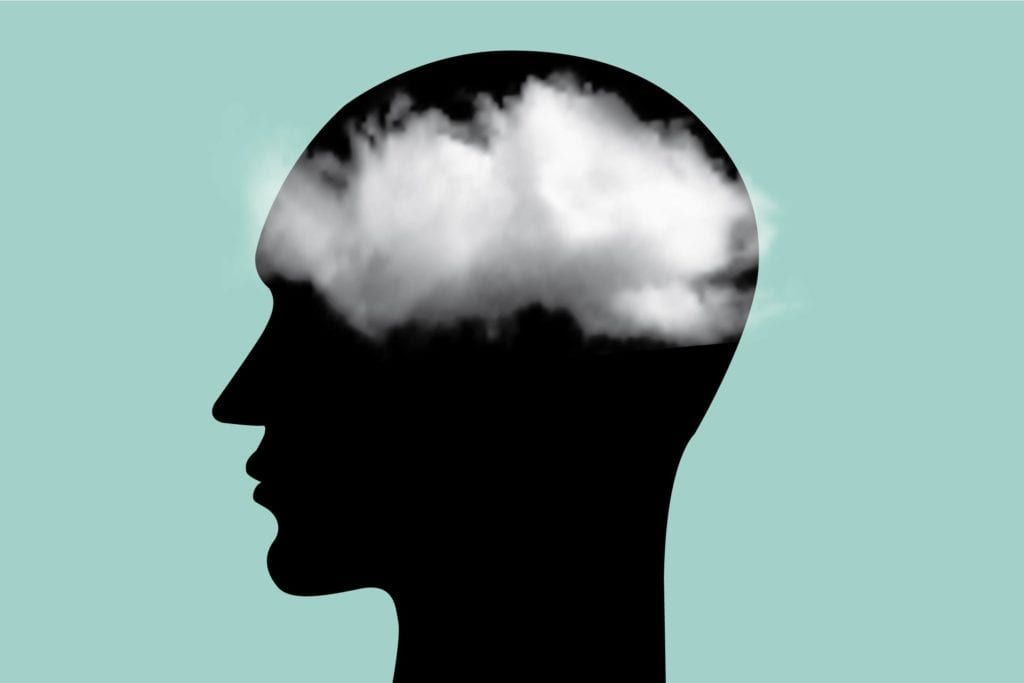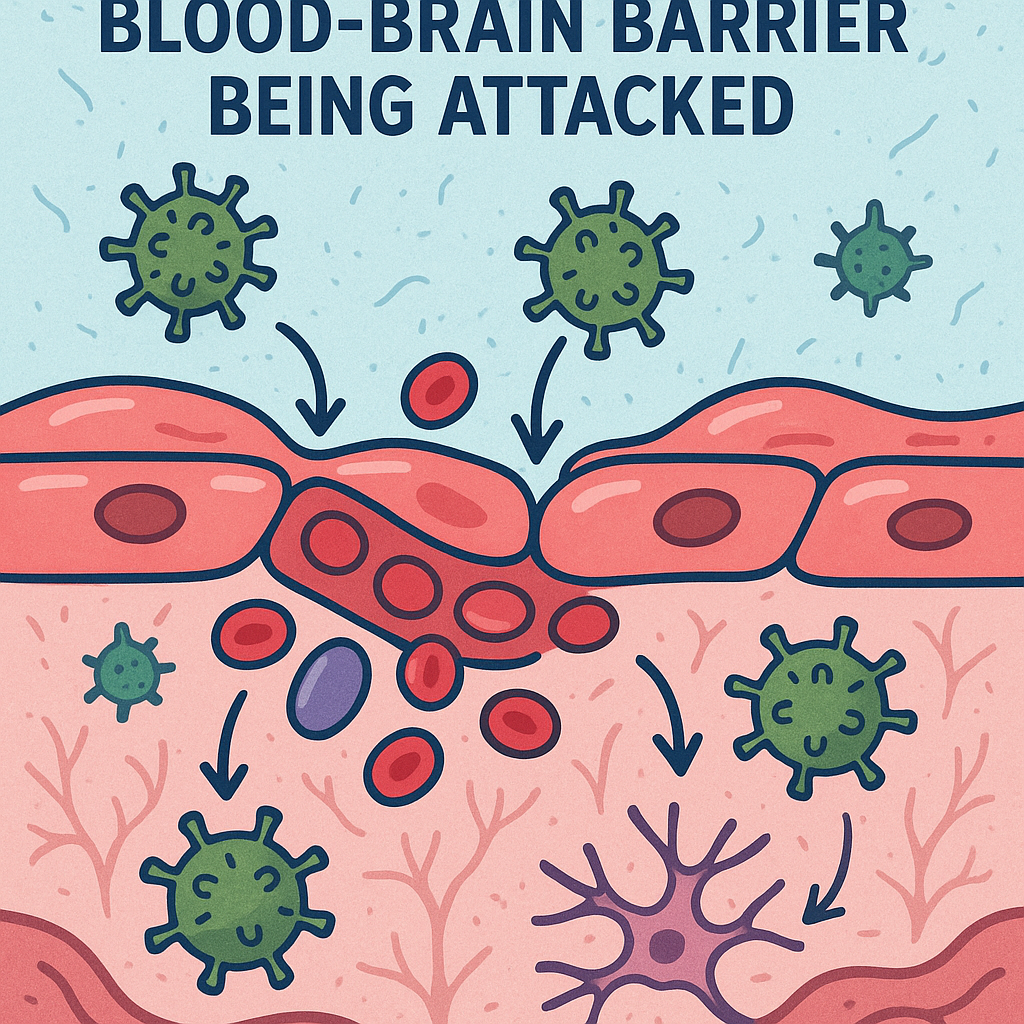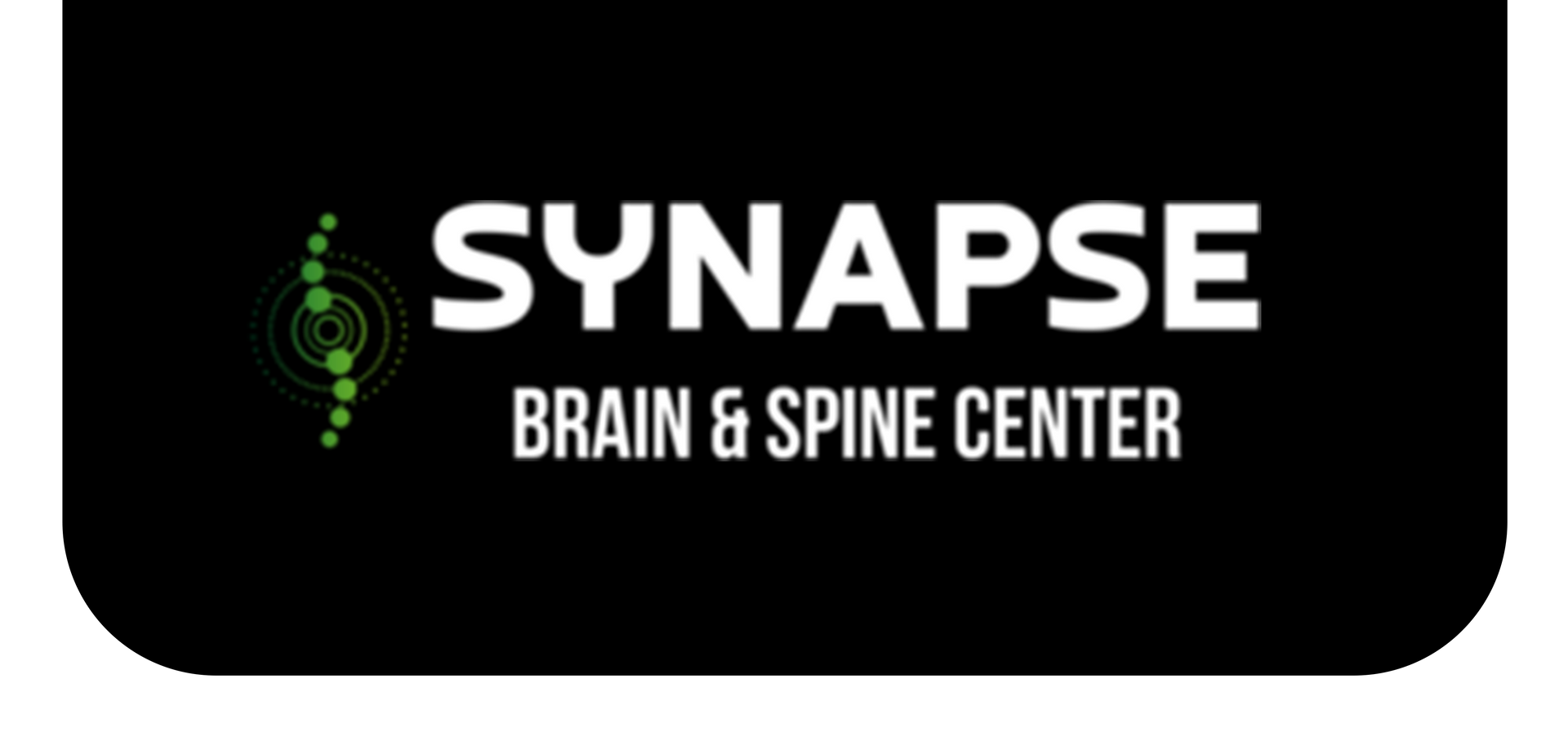⚡️ Why Brain Fog Isn’t Just in Your Head
7138999589 • June 5, 2025

Have you ever walked into a room and forgotten why? Struggled to finish a sentence, or stared at your computer with a mind as blank as the screen?
If so, you’re not alone—and it’s not just in your head. “Brain fog” is a real physiological state, not a vague feeling or an excuse. It’s your brain’s way of signaling that something is off—and it wants your attention.
🧠 What Is Brain Fog?
Brain fog isn’t a formal medical diagnosis, but it is a symptom of underlying dysfunction in how your brain communicates, processes, and focuses. Common symptoms include:
Slowed thinking
Poor concentration
Memory lapses
Mental fatigue
Trouble finding words
It can feel like your mind is wading through molasses—sluggish, disorganized, and distant.
🧬 What Causes Brain Fog?
Brain fog is rarely caused by just one thing. Here are some of the most common triggers:
🦠 Inflammation & Immune Dysfunction
Chronic infections, mold toxicity, or autoimmune conditions can lead to systemic inflammation that affects the brain’s function and connectivity.
🥦 Gut-Brain Imbalance
The gut and brain are directly connected via the vagus nerve and microbiome. Dysbiosis, leaky gut, or yeast overgrowth can release toxins that interfere with neurotransmitter production.
⛑️ Post-Concussion Changes
Even mild concussions can disrupt brainwave rhythms and blood flow, especially in areas that regulate attention and memory.
🔋 Mitochondrial or Hormonal Dysfunction
When your cells struggle to produce energy (from mold, Lyme, perimenopause, or thyroid dysfunction), the brain is often the first to suffer.
💻 Digital Overload & Stress
Constant screen time, notifications, and multitasking train the brain into a fragmented, overstimulated state—leading to mental burnout.
⚙️ How We Clear the Fog: Restoring Brain Clarity
At Synapse Brain & Spine Center, we specialize in treating brain fog using a personalized, brain-based approach that gets to the root cause.
Here’s how we help:
🔬 QEEG Brain Mapping
We use quantitative EEG to measure your brainwave patterns. Is your frontal lobe underactive? Are stress circuits stuck in overdrive? A brain map helps us see the invisible.
🧠 Neurofeedback Therapy
Once we identify dysregulation, we use neurofeedback to retrain your brainwaves—helping your brain return to a more focused, calm, and efficient state.
💡 Transcranial Photobiomodulation (Brain Laser Therapy)
This non-invasive therapy uses red and near-infrared light to increase blood flow and mitochondrial function in the brain, supporting clearer thinking and better energy.
🌬️ Hyperbaric Oxygen Therapy
Oxygen is fuel for the brain. HBOT enhances neuroplasticity and healing by delivering high levels of oxygen under pressure—especially helpful after concussions, inflammation, or mold exposure.
⚖️ Metabolic & Gut Support
We work with functional lab testing to address mold toxins, gut imbalances, blood sugar, and nutrient deficiencies—giving your brain the clean fuel it needs.
📈 Real Results: From Foggy to Focused
Many of our patients report:
Sharper mental clarity
Better word recall
More stable moods
Improved energy and focus
A sense of “feeling like myself again”
You don’t have to live in a mental haze. Your brain is capable of healing—and we’re here to guide you.
✨ Ready to Clear the Fog?
If brain fog has disrupted your life—or made you feel like you're not operating at 100%—book a $249 New Patient Brain Consult, which includes a full QEEG Brain Map, cognitive testing, and a personalized plan for recovery.
Synapse Brain & Spine Center located in Lewes Delaware
302-200-7965
Clarity is possible. Let’s bring your brain back online.


Why You Should Get Your Blood–Brain Barrier Integrity Checked with the Vibrant Wellness Neural Zoomer Discover why testing your blood–brain barrier integrity with the Vibrant Wellness Neural Zoomer is essential for identifying neuroinflammation, brain fog, and cognitive decline. Learn how Synapse Brain & Spine Center in Lewes, Delaware helps restore brain health naturally. 🧠 Understanding the Blood–Brain Barrier: Your Brain’s Most Important Defense The blood–brain barrier (BBB) is a vital, semi-permeable membrane that separates your brain from your bloodstream. Its job is to protect delicate brain tissue from toxins, pathogens, and inflammatory molecules — allowing only essential nutrients and oxygen to pass through. When functioning properly, the BBB acts like an intelligent security gate. But when that gate becomes leaky or inflamed — sometimes called a “leaky brain” — harmful substances can cross into brain tissue and trigger neuroinflammation, immune activation, and even autoimmune reactivity. At Synapse Brain & Spine Center in Lewes, Delaware, we use advanced diagnostics like the Vibrant Wellness Neural Zoomer to evaluate whether your blood–brain barrier is compromised — a critical step in understanding root-cause neurological symptoms such as fatigue, anxiety, or cognitive decline. 🚨 Signs Your Blood–Brain Barrier May Be Compromised If your BBB integrity is weakened, you may experience: Persistent brain fog or difficulty concentrating Headaches and light sensitivity Mood swings, anxiety, or depression Chronic fatigue and poor sleep Autoimmune flares or worsening neurological symptoms Heightened sensitivity to mold, chemicals, or food triggers These symptoms are often dismissed as “stress” or “aging,” but in functional neurology, they are strong clues that the brain’s immune protection has been breached. 🔬 How the Vibrant Wellness Neural Zoomer Works The Vibrant Wellness Neural Zoomer is a next-generation blood test for brain inflammation and autoimmunity. Using precision peptide technology, it measures antibody reactions to more than 50 brain-specific antigens — helping identify early neuroimmune activation long before MRI or CT scans show structural changes. Key markers that reflect blood–brain barrier permeability include: S100B and Occludin/Zonulin – tight junction proteins that signal BBB breakdown Glial Fibrillary Acidic Protein (GFAP) – indicates astrocyte damage and neuroinflammation Aquaporin-4 and Myelin Basic Protein (MBP) – associated with demyelination and autoimmune reactivity α-Synuclein, Tubulin, and Neurofilament Proteins – linked to early neurodegeneration By analyzing these biomarkers, the Neural Zoomer helps determine if your immune system is attacking your own brain tissue — providing powerful insight into conditions like post-concussion syndrome, PANDAS/PANS, mold toxicity, long COVID, and neuroautoimmunity. 🧩 Why Blood–Brain Barrier Testing Is a Game-Changer in Functional Neurology Conventional neurology often focuses on imaging and symptom management. But functional neurology goes deeper — identifying why dysfunction occurs at a cellular and metabolic level. Testing your BBB integrity with the Neural Zoomer offers several clinical advantages: Detects early neuroinflammation before irreversible damage Guides personalized therapy, such as neurofeedback, HBOT, and photobiomodulation Monitors recovery from mold exposure, infections, or traumatic brain injury Validates progress in autoimmune and detoxification protocols Supports targeted nutrition — using omega-3s, flavonoids, and antioxidants to restore barrier health At Synapse Brain & Spine Center, these results allow Dr. Robert Waterson, DC DACNB CFMP, to design personalized care plans integrating QEEG brain mapping, neurofeedback, hyperbaric oxygen therapy (HBOT), and laser photobiomodulation to repair barrier integrity and calm neuroinflammation. 🌿 The Synapse Approach: Restoring Brain Health from the Inside Out Located in Lewes, Delaware, Synapse Brain & Spine Center combines cutting-edge diagnostics with technology-based neurorehabilitation. Our patients include those struggling with: Post-concussion symptoms PANDAS/PANS and anxiety Mold toxicity and chronic fatigue Post-traumatic stress and emotional dysregulation By pairing Neural Zoomer testing with functional lab work (like the Vibrant Gut Zoomer and Food Sensitivity panels), we can uncover root causes that connect the gut, immune system, and brain. This systems-based model allows us to deliver precision neurological care — improving focus, energy, and emotional stability from the ground up. 🩸 Take the Next Step: Protect Your Brain’s Gateway Your brain health begins with the integrity of its barrier. If you experience brain fog, fatigue, anxiety, or cognitive slowdown, it may be time to check your blood–brain barrier integrity with the Vibrant Wellness Neural Zoomer. Schedule a consultation at Synapse Brain & Spine Center in Lewes, Delaware to learn how advanced testing and individualized care can help you restore your brain’s clarity, calm, and resilience. 👉 Contact Synapse Brain & Spine Center | Phone: (302-200-7965) | Location: Lewes, DE

The Hidden Link Between Food Additives and Your Child’s Symptoms Why Testing Matters for Families in Lewes, Delaware If your child is struggling with unexplained headaches, fatigue, anxiety, skin rashes, or digestive issues, it’s natural to want answers. But what if the root cause isn’t a virus or infection - it’s something hidden in their daily diet? At Synapse Brain & Spine Center in Lewes, Delaware, we see many children whose symptoms stem not from a single illness, but from underlying food additive sensitivities that trigger inflammation and affect the brain and gut. What Are Food Additives — and Why Can They Cause Problems? Food additives are substances added to foods to improve flavor, color, or shelf life. While generally recognized as safe for most people, some children’s immune systems react to these compounds as if they were harmful invaders - sparking inflammation, behavioral changes, or digestive distress. Common reactive additives include: Artificial dyes – Red #40, Yellow #5, Blue #1, and others linked to mood, attention, and hyperactivity changes. Preservatives – Sodium benzoate, BHT, and BHA, which can disrupt cellular antioxidants and impact mitochondrial health. Artificial sweeteners - Aspartame and sucralose, which may alter gut microbiome balance and affect neurological regulation. Flavor enhancers and thickeners - MSG, guar gum, and carrageenan, which can irritate the gut lining and immune response. These ingredients are commonly found in snacks, cereals, juices, yogurts, and even vitamins — making them hard to identify without testing. Signs Your Child Might Be Sensitive to Food Additives Symptoms of food additive sensitivity are often delayed, appearing hours or even days after exposure. This makes them easy to overlook and difficult to associate with a specific meal. Common symptoms can include: Persistent headaches or “ice-pick” head pain Tummy aches, bloating, or alternating constipation and diarrhea Eczema, rashes, or unexplained skin irritation Fatigue or “brain fog” after eating Sleep disruption or night-time restlessness Behavioral or attention changes that mimic ADHD Increased anxiety or mood swings Because these reactions involve the immune and nervous systems, they often overlap with neuroinflammatory conditions that can affect mood, focus, and overall development. Why Testing Makes the Difference At Synapse Brain & Spine Center, we use the Vibrant Wellness Food Sensitivity Complete Panel to identify specific immune reactions to over 200 foods and additives. This advanced testing measures IgG, IgA, and complement immune responses, helping pinpoint which ingredients may be triggering inflammation in your child’s body and brain. By identifying these hidden sensitivities, we can: Develop personalized elimination plans based on lab data — not guesswork Reduce systemic and neurological inflammation Support gut repair and microbiome balance Improve focus, sleep quality, and emotional regulation Integrative Pediatric Support at Synapse Our clinic combines functional pediatric neurology, neurofeedback therapy, and nutrition-based protocols to address the root causes of symptoms — not just suppress them. When food additives and sensitivities are identified, we often see measurable improvements in: Attention and mood stability Energy and concentration Digestive comfort Sleep quality Behavior and stress tolerance This integrative approach empowers families to understand their child’s unique biology and make sustainable, evidence-based changes for long-term wellness. Take the First Step Toward Clarity If your child experiences ongoing headaches, anxiety, or fatigue, food sensitivity testing near Lewes, Delaware may reveal what their body is reacting to — and how to help them heal naturally. At Synapse Brain & Spine Center, we specialize in identifying underlying inflammatory triggers and helping families restore neurological balance and resilience. 📍 Synapse Brain & Spine Center 19413 Jingle Shell Way, Unit 2 Lewes, Delaware 19958 Call today or visit www.synapsebraincenter.com to schedule your child’s Food Sensitivity Testing Consultation.

Hyperbaric Oxygen Therapy After a Motor Vehicle Accident in Lewes, Delaware Recover Faster at Synapse Brain & Spine Center – 19413 Jingle Shell Way, Unit 2, Lewes, DE 19958 The Hidden Impact of Car Accidents Even a seemingly minor motor vehicle accident (MVA) can trigger a complex cascade of inflammation, pain, and oxygen deprivation throughout the body. Whiplash, concussion, and soft-tissue trauma often reduce oxygen delivery to the brain and nerves, leading to symptoms such as fatigue, fogginess, chronic pain, and poor concentration. At Synapse Brain & Spine Center in Lewes, Delaware, we help accident victims recover naturally and more completely through Hyperbaric Oxygen Therapy (HBOT)—a clinically proven therapy that restores oxygen flow, reduces inflammation, and accelerates tissue repair. What Is Hyperbaric Oxygen Therapy (HBOT)? HBOT involves breathing 90% concentrated oxygen inside a pressurized chamber at 1.3–1.5 ATA. This pressure forces oxygen deep into the bloodstream, lymph, and cerebrospinal fluid—oxygenating tissues that are otherwise starved after trauma. At our Lewes hyperbaric oxygen clinic, patients comfortably relax while the body activates its natural repair mechanisms. The results can be transformative: faster healing, reduced pain, clearer thinking, and renewed energy. Benefits of HBOT After a Car Accident 1. Improves Brain Function After Concussion HBOT supports cellular recovery in the brain, decreases post-concussive inflammation, and enhances mitochondrial efficiency. Patients often notice fewer headaches, better memory, and improved mental clarity—especially when combined with QEEG-guided neurofeedback at our center. 2. Accelerates Soft-Tissue and Nerve Repair By improving oxygen delivery to injured muscles and nerves, HBOT boosts collagen synthesis and promotes angiogenesis. It’s highly beneficial for whiplash, back pain, and nerve irritation following an MVA. 3. Reduces Pain and Fatigue Hyperbaric oxygen helps flush out lactic acid and inflammatory byproducts, allowing tissues to relax and recover. This leads to less muscle tightness, improved sleep, and overall pain reduction. 4. Works Synergistically With Other Synapse Therapies At Synapse Brain & Spine Center, we combine HBOT with other advanced rehabilitative treatments for comprehensive post-accident recovery: Extracorporeal Shockwave Therapy (ESWT) – breaks down scar tissue and stimulates tendon healing Electromagnetic Transduction Therapy (EMTT) – enhances neuromuscular re-education and proprioception Laser Therapy (Photobiomodulation) – recharges mitochondria to reduce inflammation Neurological-Based Chiropractic Care – restores alignment and spinal motion This integrative model allows for faster, deeper, and longer-lasting healing. Typical HBOT Plan After an MVA Who Benefits Most Concussion and post-concussive syndrome Whiplash, neck, and back injuries Nerve pain or numbness Slow wound or tissue healing Fatigue and brain fog after trauma If you’re filing a Delaware PIP claim or working with an attorney, HBOT can often be documented as medically necessary care for post-traumatic brain and tissue recovery. Experience the Synapse Difference At Synapse Brain & Spine Center, we specialize in functional neurology, combining advanced diagnostics such as QEEG brain mapping and VOMS testing with high-tech rehabilitative therapies. Our Lewes facility provides a calm, supportive environment where patients can truly heal from the inside out. Contact Us Synapse Brain & Spine Center 📍 19413 Jingle Shell Way, Unit 2, Lewes, DE 19958 📞 (302-200-7965) 🌐 www.synapsebraincenter.com

Share On: